A Renewed Sense of Hope for Birmingham’s Hopewell Community
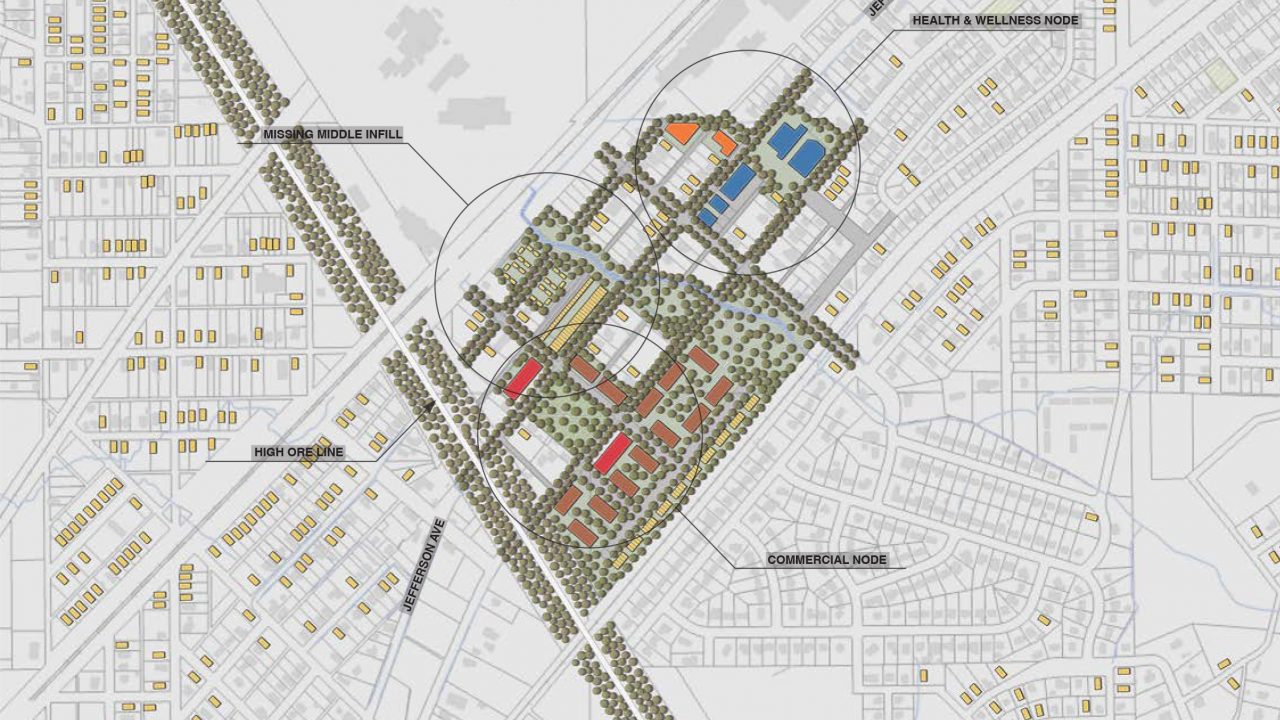
In 2023, the College of Architecture, Design and Construction’s Urban Studio students collaborated with Project Hopewell, a 501(c)(3) nonprofit that aims to enhance community development and provide resources to underserved populations.
Project Hopewell focuses on revitalizing neighborhoods to make them safe and self-reliant. In the Hopewell community, their work is particularly focused on families, children, the disabled, the elderly and immigrants—populations all often underserved through traditional services.
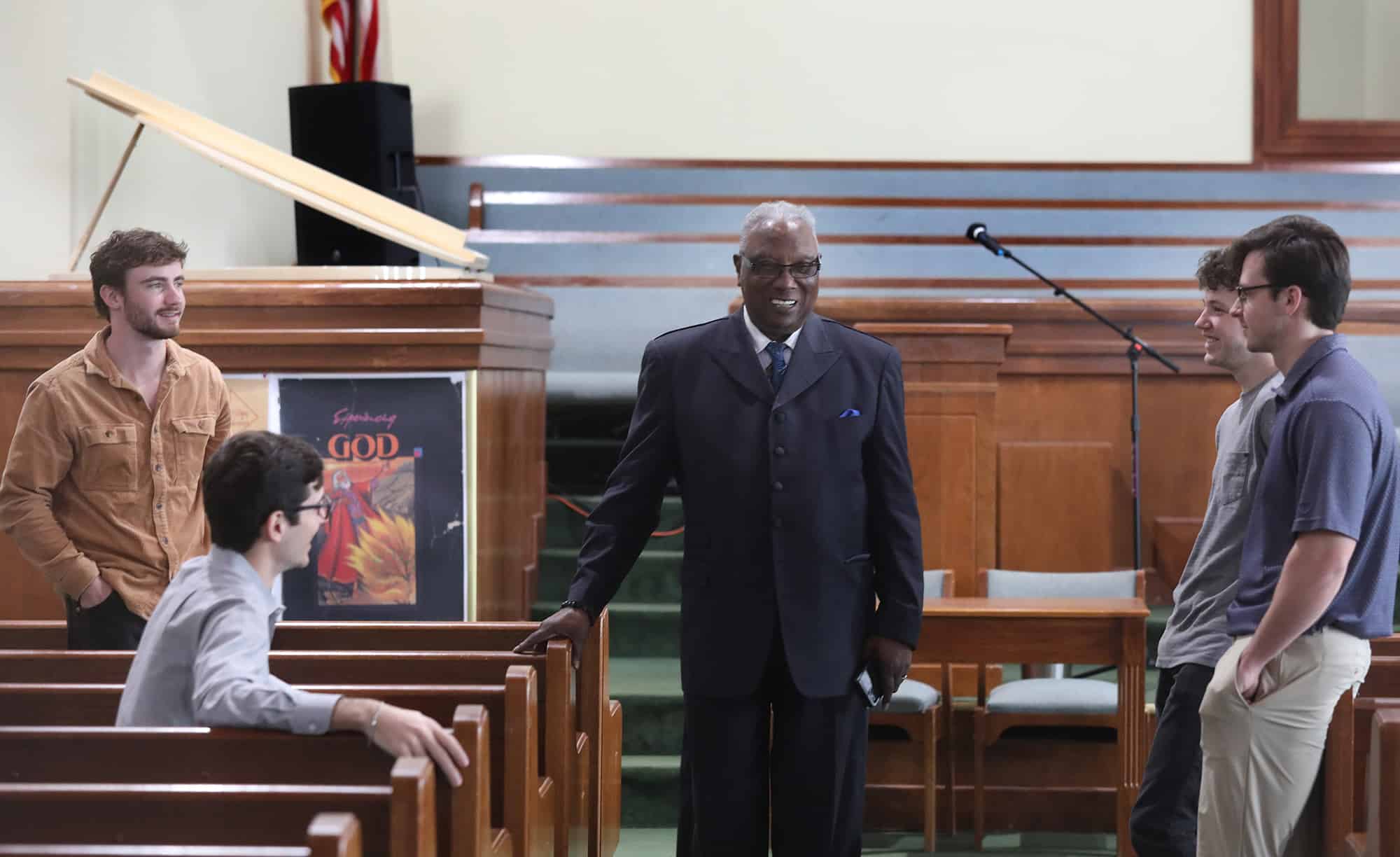
The students worked closely with Project Hopewell and local leaders. Their presentation included analysis, strategy, development and collaborative opportunities for the community to better understand how to meet the unique needs of their community. The students worked with Urban Studio alumna Amanda Loper ’05 of David Baker Architects (DBA), who returned to her alma mater to present and lead a discussion on the DBA text, 9 Ways to Make Housing for People.
Working with the Urban Studio students was an easy decision for Horace Miller, CEO of local construction company Miller-Powell Group.
“I chose to work with the Urban Studio because of the reputation of Auburn’s School of Architecture, Planning and Landscape Architecture.” Of course, it also didn’t hurt that Mr. Miller had a family connection to The Plains: his wife and both of his sons attended Auburn.
Along with adjunct faculty Ben Wieseman ’12, Miller’s goal was to engage the students in creating a master plan for developing the Hopewell community. As Miller tells it, the students exceeded his expectations, and he was very complimentary of the job they did on the project.
“Teaching students is always a joy, and especially with this group,” Wieseman added. “The Hopewell project provided a chance for the third- and fifth-year students to work with each other and the community to provide a comprehensive neighborhood vision and development strategy. The project pushed the students out of their comfort zones to develop and/or reinforce their skills in community engagement, site analysis and master planning.”
Through this project, the students were tasked with documenting and presenting the community’s assets, needs and opportunities, along with their findings in a final report that would assist Hopewell in their development plans and creating a consensus vision for moving forward.
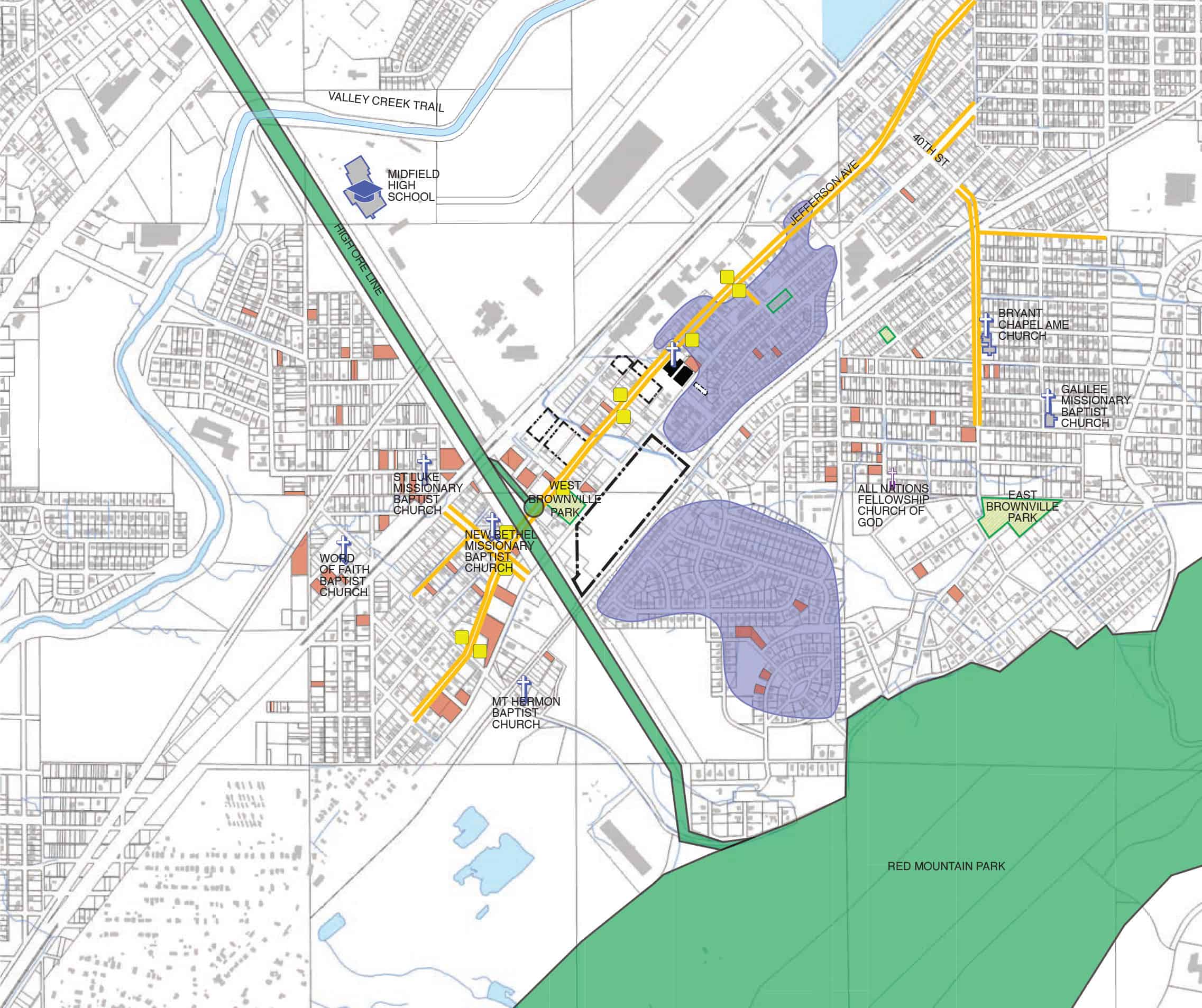
Developing the Project Hopewell Master Plan
Students analyzed the current state of the Hopewell neighborhood, including the existing conditions of housing, commercial development and public spaces. This led to the development of a collaborative master plan for the neighborhood’s future. Housing, an on-site clinic, assisted living and storm shelters are among the immediate needs of Hopewell residents. Ultimately, it is hoped by meeting these needs the community can be rejuvenated and able to attract new residents, promote homeownership and create a renewed vibrancy.
The strategy includes improving major connectors like Jefferson Avenue, creating greenway loops and focusing on health care and commercial development around key nodes, such as West Brownville Park and Hopewell Community Baptist Church. The church and park play a vital role as community hubs, which will aid Project Hopewell in the implementation of the master plan, and especially with potential partnerships with other community groups as well as state and federal agencies.
As the students explained, there are a few opportunities to concentrate resources and have an immediate impact. By investing in smaller projects first, like establishing the key nodes of West Brownville Park and Hopewell Community Baptist Church, things can then fall into place as interest grows.
The students were able to see the link between population density and influence to get access to services the community needs. By making Hopewell’s neighborhoods into places people want to live, residents will begin to see residual effects on transportation resources, consistency in access to transit and new options for both necessities and amenities.
Hopewell is not alone in focusing on redevelopment. Other Birmingham neighborhoods have taken the redevelopment route in creating initiatives for revitalization. Both the Ensley and Smithfield revitalization projects help Project Hopewell provide context and inspiration for potential partners to support the efforts in this neighborhood.
Community leaders are especially focused on housing options. Without a variety of housing options designed to meet different needs, it becomes difficult to promote community integration. For housing, the students’ plan focused on creating opportunities for options that meet families where they are—from traditional single-family homes and multi-family apartments to townhomes and cottages, having options will attract new residents from different socio-economic situations.
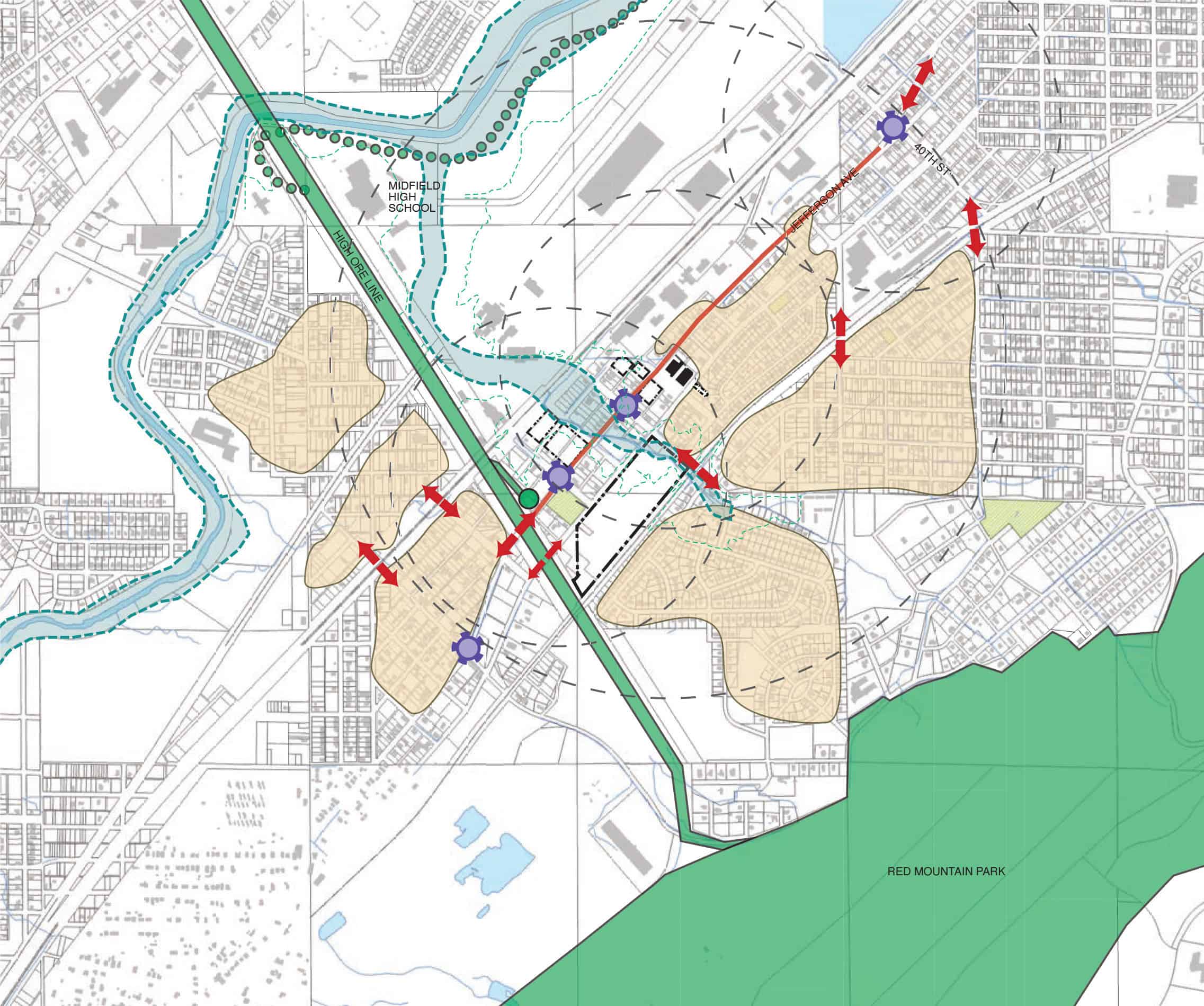
The Student Experience
By creating this master plan, the students provided something tangible Project Hopewell could present to stakeholders and investors and a vision of what the future could look like for residents. The students were able to help articulate these ideas into a physical plan. They brought energy, excitement and a willingness to engage the community to understand their needs.
As Wieseman explained, “This attitude and level of engagement is critical to help students further their abilities to connect with people and places and then to utilize their design skills to understand the community assets and needs to generate design-led analysis and solutions.”
Additionally, engaging students to provide high-level visioning and design thinking gives a client a different experience from working with a professional design firm. Oftentimes, clients find that big ideas can flourish and seeds of new projects get planted. While student projects have deadlines by nature, both the client and the students are not encumbered by the typical owner and consultant relationships, expectations and project milestones. This provides the client with outcomes that are generally broader in scope and vision while not tied to financial overages and other performance metrics.
Seminars that provide real-world experience with projects like Hopewell give the Urban Studio students insights into people, communities and situations they may never otherwise be exposed to. It also forces them to recognize the challenges communities often face. Miller explained the biggest challenge he discovered through this process ended up being the local political climate, an experience the students may not have otherwise understood without experiencing it firsthand with Hopewell.
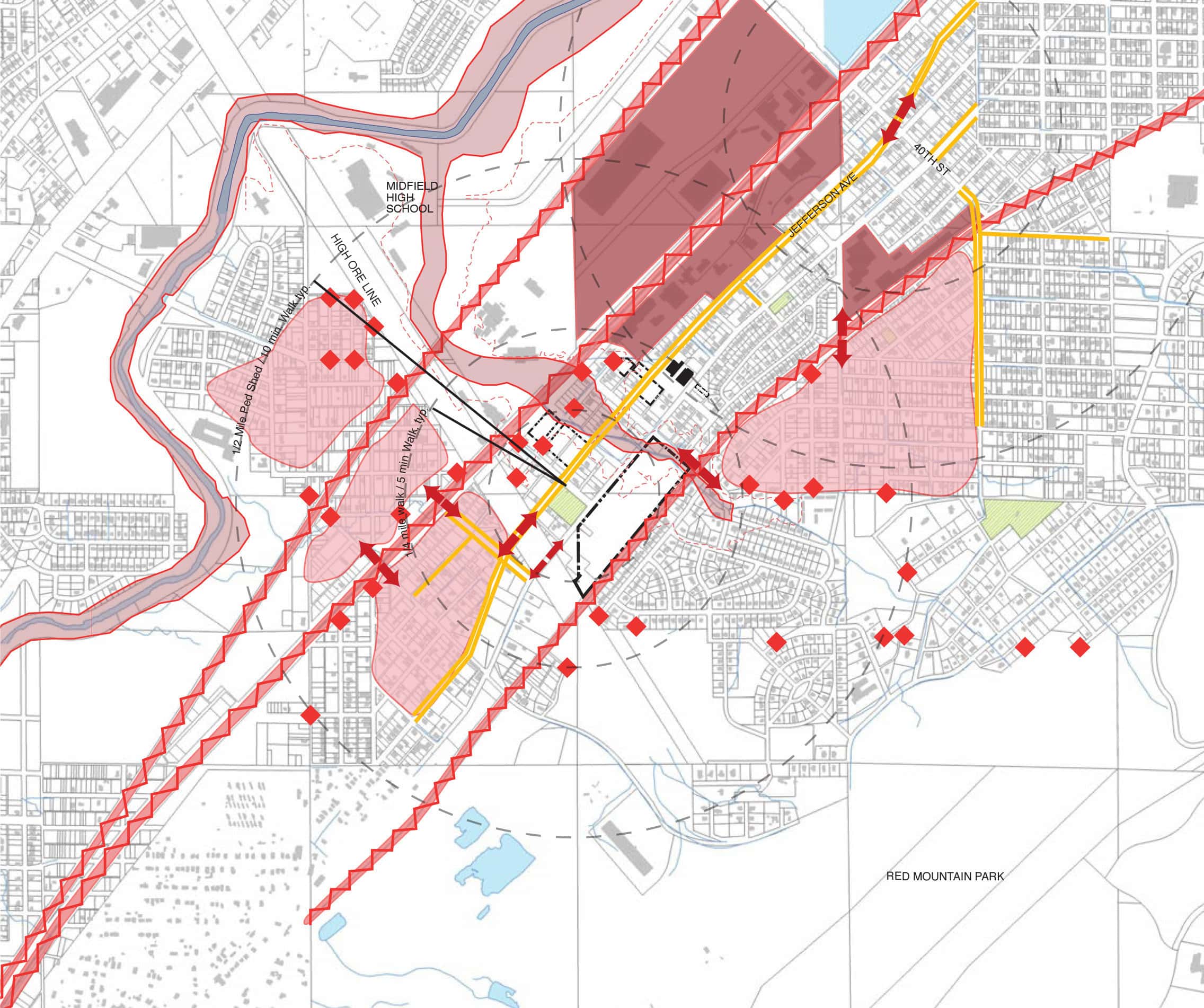
Why Hopewell?
The students’ work on the Hopewell project is important to the revitalization of not only the Hopewell community but to the greater area.
“This revitalization will have a significant impact on the community’s economic, social and living standards, which is also beneficial for Birmingham,” Miller explained.
As the adage goes, a rising tide lifts all ships.
Hopewell’s contribution to Birmingham goes back nearly a century. Hopewell Community Baptist Church was founded in 1929, on the cusp of the Great Depression. As with many churches at the time, church leaders likely found themselves as a place to help community members in need. This was especially important for Birmingham’s African American community. The prevalence of Jim Crow laws and social mores made the economic effects of the Depression worse for African Americans.
The early 1900s were also an important time in community and neighborhood development in Birmingham. Without support from the municipal, county or state government, Birmingham’s predominantly black neighborhoods were often left to fend for themselves for community improvement projects. From playgrounds to streetlights, residents organized themselves and pooled funds to ensure their neighborhoods were safe and vibrant.
Hopewell Community Baptist Church also played a significant role as a “movement church” affiliated with the Alabama Christian Movement for Human Rights (ACMHR). In Birmingham, Sixteenth Street Baptist Church and Bethel Baptist Church are often the focus, but Hopewell was among nearly 60 churches organizing and contributing to the push for civil rights throughout the mid-20th century.
The commitment to community activism and support has never stopped in Hopewell. The church also plays an integral role in caring for the community after disasters. Following the Christmas Day tornadoes in 2015, Project Hopewell’s Executive Director Ava Wise explained to CBS 42 the pivotal role of Hopewell Community Baptist Church in her community.
Ultimately, though, the students’ work in Hopewell will have a lasting effect on the community’s revitalization work.
Horace Miller explained it best, “On this project, Urban Studio has been instrumental in helping move the project forward. The students were focused on the project and were very professional.”
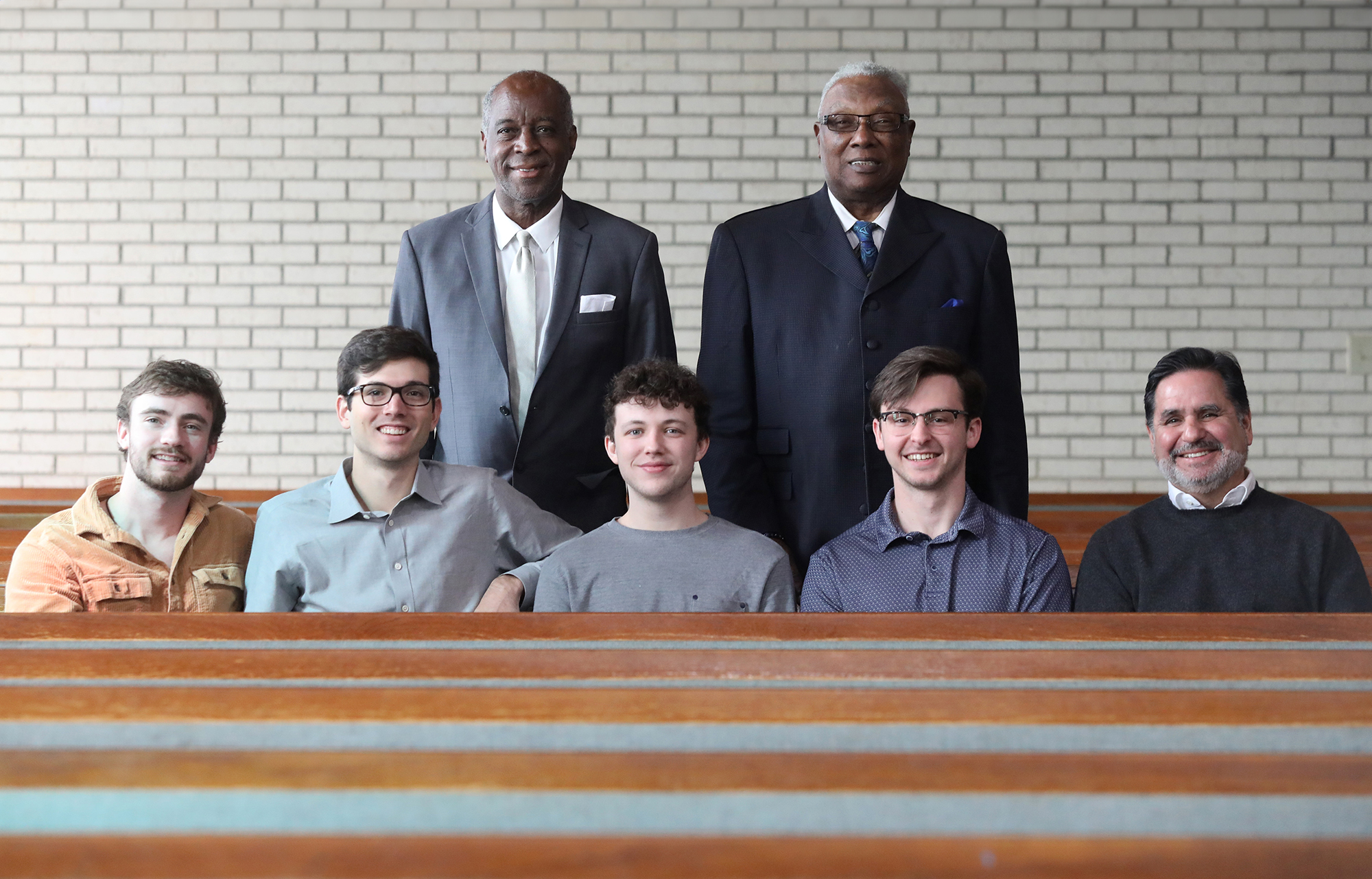
Want to learn more about the Urban Studio experience?
See more in:
AOI Research,
Student Experience,
Student Work,
Urban Studio
Related people:
Alex Krumdieck,
Jennifer Cloe